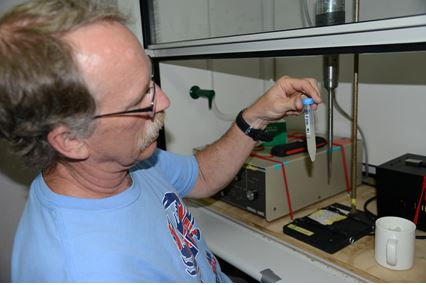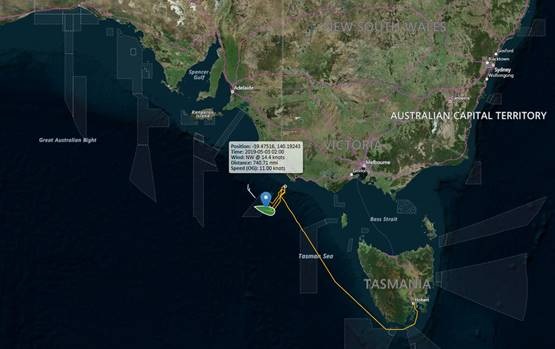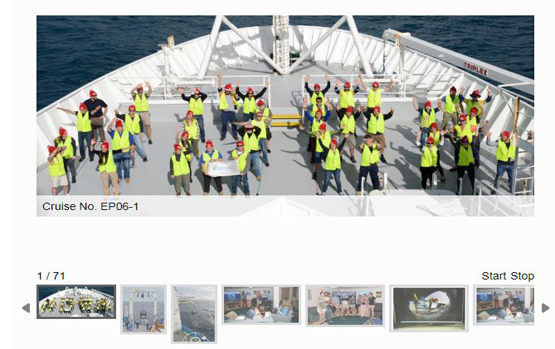The RV Investigator is currently undertaking oceanographic research along the 110°E meridian off Western Australia as part of the second International Indian Ocean Expedition. The voyage is led by Professor Lynnath Beckley of Murdoch University and the research is supported by a grant of sea time on RV Investigator from the CSIRO Marine National Facility.
|
Date: June 02, 2019 |
Time: 1200 AWST |
|
Latitude: 15.5°S |
Longitude: 110°E |
|
Wind direction: E |
Wind speed:17 knots |
|
Swell direction: SE 2m, NE 0.5m, SW 2m |
Depth: 5727 m |
|
Air temperature: 27°C |
Sea temperature: 27°C |
|
Notes: At Station 17 of 20 on the 110°East line, we are in some of the deepest water so far |
|
Food webs describe the feeding (trophic) relationships that exist among organisms in an ecosystem. If you have heard the old fisherman's adage that "big bait catches big fish", you may intuitively understand how ocean food webs operate, mainly on the basis of size, with larger consumers eating successively smaller prey down to where it all begins with microscopic phytoplankton. This is fundamentally different than food webs on land, where the plants are often much larger than their consumers (e.g., insects grazing on trees).
A further twist of ocean food webs is that different ocean conditions select for different sizes of phytoplankton. In the poorest (oligotrophic) environments, which occur over much of the tropical and subtropical open ocean, very small phytoplankton (photosynthetic bacteria) dominate because they are the most efficient competitors for nutrient uptake at low concentrations. In nutrient-rich coastal systems, large phytoplankton are dominant. One consequence of this difference is that open-ocean food webs lose most of their energy in transfers from tiny producers to tiny consumers on up, with little remaining in the end to support fisheries. In contrast, richer systems with large phytoplankton and larger consumers have fewer steps of intermediate consumers and can channel productivity more efficiently to fishes.
In this project (IN2019_V03), we are taking two approaches to compare food-web relationships along the stations and regions on the cruise track. One is experimental, involving measurements of community composition, productivity and grazing rates. The other utilizes information that resides in the isotopic composition of planktonic consumers to quantify their mean trophic positions in the food web relative to phytoplankton.
Be sure to follow our daily Log from One Ten East at https://iioe-2.incois.gov.in and https://wamsi.org.au






